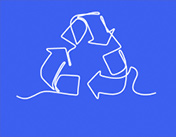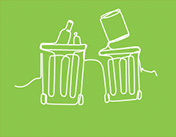Marine Litter
a Growing Global Challenge
Driven by rapid urbanisation, economic development and changing consumption and production patterns, the amount of single-use plastics is rapidly increasing worldwide. At the same time, waste management systems still lack effectiveness in terms of environmentally sound collection, sorting, recycling and disposal of packaging waste. These trends significantly contribute to marine littering – a growing global threat to marine ecosystems, fisheries, health as well as the tourism sector.
Marine litter, including abandoned, lost or otherwise discarded fishing gear, affects over 800 species in marine and coastal environments. About 60 to 90% of it consists of plastics and much comes from single-use plastic packaging and products, such as straws and bags. In total, 5 to 13 million tons of plastic waste find their way into the world’s oceans every year. Microplastics, entering food chains and drinking water, are of particular concern due to their potential toxicity and size.
East and Southeast Asia belong to the major hotspot regions worldwide for plastic waste leakage into the ocean and its potential impacts on biodiversity. In addition, about half of the global plastics are produced in Asia.
Governments, businesses, academia and civil society increasingly recognise that a switch towards a circular economy for plastics is necessary to tackle marine litter and to meet the Sustainable Development Goals (SDGs). Initiatives have emerged, for instance, at the level of the G20 and the UN, by the Association of Southeast Asian Nations (ASEAN) and the EU as well as on national and local level. Strengthened cooperation between the EU and partner countries in Asia in the areas of circular economy, plastic waste management and marine litter reduction as supported by ‘Rethinking Plastics’ thus provides mutual opportunities.







